by Lorri | Sep 15, 2010 | UnCorked
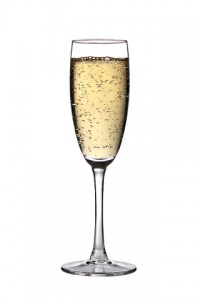 Many people ask why one glass of champagne can make them feel tipsy and lightheaded — somehow the first glass goes straight to your head in a way wine never does. I set out to find proof or debunk the myth and found bubbles really do get you cheery more quickly.
Many people ask why one glass of champagne can make them feel tipsy and lightheaded — somehow the first glass goes straight to your head in a way wine never does. I set out to find proof or debunk the myth and found bubbles really do get you cheery more quickly.
Researchers at the University of Surrey in Guildford, England, invited volunteers to participate in the task of mingling at a drinks party. The first week, half were given fizzy champagne, while the others got a “defizzed” wine. The next week they rotated. Each volunteer drank two glasses of bubbly per session, with the amount adjusted so everyone drank the same amount of alcohol per body mass. Next they measured blood alcohol levels and found they were increased in the volunteers drinking the fizzy. Their blood alcohol levels were measured at five-minute intervals. Fizzy champagne produced significantly higher levels of alcohol in the blood during the first 20 minutes than the flat champagne.
According to the research, in the first five minutes, they hit 0.54 milligram of alcohol per milliliters of blood compared to just 0.39 in the flat volunteers. The study showed champagne does affect your body more quickly but they also wanted to investigate if it had different effects. They tested reaction times, divided attention, vigilance and memory. The results showed neither had an effect on memory but both impaired reaction time. It was the complex tasks showing the most astounding results. The fizzy drinkers were much slower to react to stimuli and found it harder to identify series of odd and even numbers in the task.
The larger mystery is why bubbles make such a difference. Fran Ridout, whose team in human psychopharmacology conducted the research, has a theory that the alcohol must be absorbed more quickly from the digestive system, perhaps because the carbon dioxide bubbles speed the flow of alcohol from the stomach to the intestine.
So, the best advice is to sip your bubbly slowly and enjoy. Champagne anyone?
THE VALUES
- NV Seaview, Australia (about $13 retail)
- NV Domaine Ste Michelle, Washington (about $18 retail)
THE SPLURGES
- NV Jean Laurent Blanc de Blanc Champagne, France (about $55 retail)
- NV Pommery Champagne, France (about $49 retail)
by Lorri | Sep 8, 2010 | UnCorked
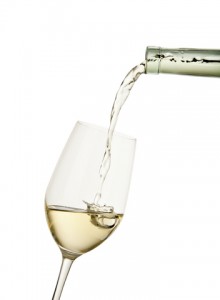 With the (unofficial) start of fall feeling much like the middle of summer, most of us are still looking for refreshing and light wines. Typically I take a respite from my heavy reds over the summer, and this time of year I find myself worn out with my routine white wines.
With the (unofficial) start of fall feeling much like the middle of summer, most of us are still looking for refreshing and light wines. Typically I take a respite from my heavy reds over the summer, and this time of year I find myself worn out with my routine white wines.
I’m not alone in this rut, knowing many readers are reaching out for new ideas. So, rather than rant and rave about the summer heat, and the longing for heavy red wine and hearty stews, I thought a buying list would be best. In the past few weeks I have found an array of refreshing wines to revitalize my late summer wine list.
THE VALUES
- 2009 Whitehall Lane Sauvignon Blanc, California (about $16 retail)
- 2009 Melini Orivieto, Italy (about $11 retail)
- 2009 Spanish Quarter Chardonnay-Albarino, Spain (about $10 retail)
- 2009 Chateau Bonnet Blanc, France (about $15 retail)
- 2009 Banfi Principessa Gavia, Italy (about $14 retail)
- 2009 Wente Vineyards Riesling, California (about $16 retail)
- 2009 Castello Banfi Le Rime Pinot Grigio, Italy (about $9 retail)
- 2009 Anne Amie Cuvee A Pinot Rose, Oregon (about $15 retail)
- 2009 Nobilissima Pinot Grigio, Italy (about $14 retail)
THE SPLURGES
- 2009 Hugel Pinot Gris, France (about $20 retail)
- 2009 Georges Duboeuf Pouilly Fuisse, France (about $38 retail)
- 2009 Dashwood Sauvignon Blanc, New Zealand (about $18 retail)
- 2009 Montinore Estate Gewurztraminer, Oregon (about $19 retail)
- 2009 Mt. Difficulty Sauvignon Blanc, New Zealand (about $22 retail)
by Lorri | Sep 1, 2010 | UnCorked

Photograph: Patrick Seeger/EPA
September marks the celebration of Organic Harvest Month, a widespread promotion of organic food and agriculture started by the Organic Trade Association 18 years ago. However, California’s Mendocino County wine region committed to organic production long before it was the trend to go “green.”
These farmers, grape growers and winemakers continue to lead the way in the sustainable, organic and biodynamic farming movements. (Biodynamic farming considers the farm a living organism.)
Recently, I had the opportunity to talk with Ann Thrupp, manager of sustainability and organic development at Fetzer Vineyards, and Martha Barra, owner of Barra of Mendocino. Both affirmed the path and goal of a community committed to wise use of the earth’s resources, which is the goal of the green movement.
Fetzer Vineyards has long been committed to sustainable agricultural practices, Thrupp says. In the 1980s, the Fetzer family established organic fruit and vegetable gardens at the vineyards, eventually transferring their organic farming know-how to the grapes, she says.
In the philosophy of “sharing the knowledge,” in the last 10 years they have aggressively collaborated with other vineyards to expand organic growing practices in the region.
The company’s 10,000-square-foot administration building is made exclusively of recycled materials and it is one of California’s first wineries to use 100 percent “green” energy for all winery operations. With the push in lightweight packaging and companywide waste reduction, Fetzer continues to be a respected role model for the wine industries ecologyfriendly future.
Barra’s life motto — “I would rather burn out than rust out” — is a drive overflowing from the way she lives her life into Barra of Mendocino’s dedication to promoting sustainable practices. The winery has been growing organic for more than 50 years, but for “the first 30 we didn’t know it,” she says.
Pushing past farming practices, last year the winery, in partnership with Ukiah Natural Foods, launched ReCork (recork.org), a recycling program for wine corks. In the already eco-friendly community, recycling was not across-the-board because even though the bottles were recycled and the grapes were organic, the corks were ending up in landfills. The program established drop-off locations for corks. They are then ground up and used by Sole, a footwear manufacturer.
THE VALUES
- 2008 Fetzer Vineyards Cabernet Sauvignon, California (about $10 retail)
- 2008 Fetzer Vineyards Pinot Noir, California (about $10 retail)
by Lorri | Aug 25, 2010 | UnCorked
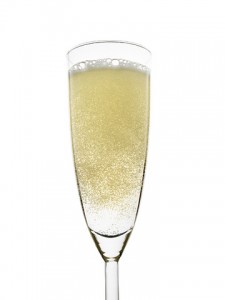 A lot has changed over the past few years for Italy’s Prosecco. The sparkling wine has been produced in a wide range of quality, from the top of the pyramid, Cartizze, to the canned Prosecco made in Austria and promoted by Paris Hilton.
A lot has changed over the past few years for Italy’s Prosecco. The sparkling wine has been produced in a wide range of quality, from the top of the pyramid, Cartizze, to the canned Prosecco made in Austria and promoted by Paris Hilton.
This wobbly image of quality gained the attention of Italians, who historically take their wine production very seriously. That attention resulted in new regulations for the wine.
The heart of Prosecco production is the Veneto region, notably the area bordering the towns of Valdobbiadene and Conegliano. Beginning last year, a labeling change brought more stringent production requirements in the Prosecco di Congeliano e Valdobbiadine zone. If the label has the name “Prosecco,” it requires specific production techniques and only grapes grown in strictly controlled areas.
One would expect this to clear up any confusion; however, the new designation may have added to it.
Italian wines are given levels of quality much like the French Appellation d’Origine Controlee (AOC). Beginning with the Vino da Tavola (basic table wine), the levels progress to Vino a Indicazione Geografica (IGT), Vino a Denominazione di Origine Controllata (DOC) and Vino a Denominazione di Origine Controllata e Garantita (DOCG). Each level adheres to more stringent rules for growing and production. The change for Prosecco basically upgrades the areas previously given the lesser IGT designation to DOC. To add to the confusion, it also technically renames the grape from Prosecco to its ancient name “glera” for producers outside of the named zones, effectively making “Prosecco” a place name and not a grape variety.
It’s a lot to take in, especially for those already struggling to comprehend Italian labeling. However, with these changes we will see more protection for quality producers who in the past dealt with lesser versions continually jeopardizing their reputation. As for consumers, let’s hope it resolves some of the confusion from the many styles and prices of our beloved Prosecco.
THE VALUES
- NV Zonin Prosecco, Italy (about $15 retail)
- NV Candoni Prosecco, Italy (about $15 retail)
THE SPLURGES
- NV Santa Margherita Brut Prosecco, Italy (about $25 retail)
- NV Oriel 365 Prosecco, Italy (about $26 retail)
by Lorri | Aug 18, 2010 | UnCorked
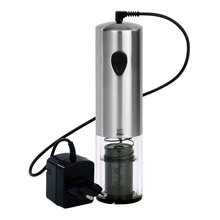 A few weeks ago we were having dinner with friends and again, a super-technical wine opening gizmo gave way to the cork. We stood around pondering the reason for the malfunction: batteries, user error or a defective cork.
A few weeks ago we were having dinner with friends and again, a super-technical wine opening gizmo gave way to the cork. We stood around pondering the reason for the malfunction: batteries, user error or a defective cork.
In the end we used a traditional waiter’s corkscrew to open the bottle. Just like an electric vs. hand-crank can opener, regardless of your preferred method, every household should have a standby wine opener.
There are several types of time-honored, low-tech corkscrews including the wing, waiter’s corkscrew and the twin-prong cork puller.
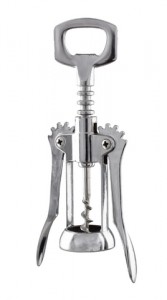 The wing corkscrew (also called the butterfly) has two levers on each side of the worm. This opener makes it easy and almost effortless to pull the cork, even for the neophyte. The worm is inserted into the cork, the handles are pressed down and the cork slides out easily. They are inexpensive (on average less than $10) and come in a variety of styles.
The wing corkscrew (also called the butterfly) has two levers on each side of the worm. This opener makes it easy and almost effortless to pull the cork, even for the neophyte. The worm is inserted into the cork, the handles are pressed down and the cork slides out easily. They are inexpensive (on average less than $10) and come in a variety of styles.
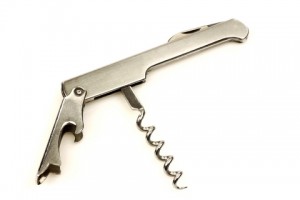 Most are familiar with the waiter’s corkscrew used in restaurants. It’s also known as a sommelier knife, waiter’s friend or wine key. The worm is manually screwed into the center of the cork, an arm extends to brace the opening of the bottle for leverage and with a single lever pull, the cork is lifted out. I have heard complaints of corks bending and breaking as they are being removed. This can occur if the cork is being pulled at an angle, causing the cork to break or tear.
Most are familiar with the waiter’s corkscrew used in restaurants. It’s also known as a sommelier knife, waiter’s friend or wine key. The worm is manually screwed into the center of the cork, an arm extends to brace the opening of the bottle for leverage and with a single lever pull, the cork is lifted out. I have heard complaints of corks bending and breaking as they are being removed. This can occur if the cork is being pulled at an angle, causing the cork to break or tear.
 The twin-prong cork puller is also known as the butler’s friend. Rather than using a screw mechanism, this corkscrew has two prongs that are wedged into either side of the bottle between the cork and the glass. With a quick twist the cork is out unscathed. I consider this corkscrew to be for the seasoned and experienced, simply because skill and care are necessary not to punch the cork back into the bottle.
The twin-prong cork puller is also known as the butler’s friend. Rather than using a screw mechanism, this corkscrew has two prongs that are wedged into either side of the bottle between the cork and the glass. With a quick twist the cork is out unscathed. I consider this corkscrew to be for the seasoned and experienced, simply because skill and care are necessary not to punch the cork back into the bottle.
After opening thousands of bottles of wine using openers from innovative to traditional, my dependable choice (as is the choice of most wine professionals) continues to be my waiter’s corkscrew.
by Lorri | Aug 11, 2010 | UnCorked
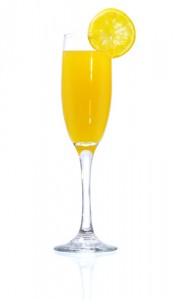 I am not a fan of adding anything to wine. But last night while flipping through a book on wine cocktails, the enticing photographs of frosty glasses and refreshing offerings mixed with the unbearable heat gave me the desire to explore.
I am not a fan of adding anything to wine. But last night while flipping through a book on wine cocktails, the enticing photographs of frosty glasses and refreshing offerings mixed with the unbearable heat gave me the desire to explore.
The Mimosa, which mixes champagne and orange juice, has been around since the 1920s and is a staple at late-morning brunches, so the wine cocktail is not a new concept. It’s simply a mixed drink using wine as the main ingredient.
In A.J. Rathbun’s book Wine Cocktails, 50 Stylish Sippers That Show Off Your Reds, Whites and Roses, he introduces modern, innovative mixtures using cabernet sauvignon, sauvignon blanc, port, sherry, Riesling and even sake.
I must admit that “ice cubes” dropping into any wine glass — frosty or not — was a painful pause, but the end mixture was a refreshing look at wine … with a twist.
The Blue Wave
- 4 green apple slices
- 2 orange slices
- 2 kiwi slices
- 3 ounces Hpnotiq (see note)
- 5 ounces dry white wine
- 2 ounces fresh orange juice
- 6 frozen green grapes
- 4 ounces chilled ginger ale
- Combine sliced fruit in a cocktail shaker or mixing glass. Use a muddler or wooden spoon, muddle well. Fill the shaker halfway full with ice cubes. Add the Hpnotiq, white wine and orange juice. Shake well. Add 3 grapes to each of 2 cocktail glasses. Strain wine mixture into wine glasses over frozen grapes and top each glass with 2 ounces ginger ale. Serve immediately.
- Makes 2 cocktails.
Note: Hpnotiq is fruit liqueur that is a blend of vodka, tropical fruit juice and cognac.
Vanilla-Pear Mimosa
- 3 ounces vanilla-flavored vodka
- 1 1 /2 ounces pear nectar Italian Prosecco, chilled
- Fill a cocktail shaker halfway full with ice cubes. Add the vodka and pear nectar. Shake well. Strain equally into 2 fluted glasses. Top off each glass with Prosecco.
- Makes 2 cocktails.
 Many people ask why one glass of champagne can make them feel tipsy and lightheaded — somehow the first glass goes straight to your head in a way wine never does. I set out to find proof or debunk the myth and found bubbles really do get you cheery more quickly.
Many people ask why one glass of champagne can make them feel tipsy and lightheaded — somehow the first glass goes straight to your head in a way wine never does. I set out to find proof or debunk the myth and found bubbles really do get you cheery more quickly. With the (unofficial) start of fall feeling much like the middle of summer, most of us are still looking for refreshing and light wines. Typically I take a respite from my heavy reds over the summer, and this time of year I find myself worn out with my routine white wines.
With the (unofficial) start of fall feeling much like the middle of summer, most of us are still looking for refreshing and light wines. Typically I take a respite from my heavy reds over the summer, and this time of year I find myself worn out with my routine white wines.
 A lot has changed over the past few years for Italy’s Prosecco. The sparkling wine has been produced in a wide range of quality, from the top of the pyramid, Cartizze, to the canned Prosecco made in Austria and promoted by Paris Hilton.
A lot has changed over the past few years for Italy’s Prosecco. The sparkling wine has been produced in a wide range of quality, from the top of the pyramid, Cartizze, to the canned Prosecco made in Austria and promoted by Paris Hilton. A few weeks ago we were having dinner with friends and again, a super-technical wine opening gizmo gave way to the cork. We stood around pondering the reason for the malfunction: batteries, user error or a defective cork.
A few weeks ago we were having dinner with friends and again, a super-technical wine opening gizmo gave way to the cork. We stood around pondering the reason for the malfunction: batteries, user error or a defective cork. The wing corkscrew (also called the butterfly) has two levers on each side of the worm. This opener makes it easy and almost effortless to pull the cork, even for the neophyte. The worm is inserted into the cork, the handles are pressed down and the cork slides out easily. They are inexpensive (on average less than $10) and come in a variety of styles.
The wing corkscrew (also called the butterfly) has two levers on each side of the worm. This opener makes it easy and almost effortless to pull the cork, even for the neophyte. The worm is inserted into the cork, the handles are pressed down and the cork slides out easily. They are inexpensive (on average less than $10) and come in a variety of styles. Most are familiar with the waiter’s corkscrew used in restaurants. It’s also known as a sommelier knife, waiter’s friend or wine key. The worm is manually screwed into the center of the cork, an arm extends to brace the opening of the bottle for leverage and with a single lever pull, the cork is lifted out. I have heard complaints of corks bending and breaking as they are being removed. This can occur if the cork is being pulled at an angle, causing the cork to break or tear.
Most are familiar with the waiter’s corkscrew used in restaurants. It’s also known as a sommelier knife, waiter’s friend or wine key. The worm is manually screwed into the center of the cork, an arm extends to brace the opening of the bottle for leverage and with a single lever pull, the cork is lifted out. I have heard complaints of corks bending and breaking as they are being removed. This can occur if the cork is being pulled at an angle, causing the cork to break or tear. The twin-prong cork puller is also known as the butler’s friend. Rather than using a screw mechanism, this corkscrew has two prongs that are wedged into either side of the bottle between the cork and the glass. With a quick twist the cork is out unscathed. I consider this corkscrew to be for the seasoned and experienced, simply because skill and care are necessary not to punch the cork back into the bottle.
The twin-prong cork puller is also known as the butler’s friend. Rather than using a screw mechanism, this corkscrew has two prongs that are wedged into either side of the bottle between the cork and the glass. With a quick twist the cork is out unscathed. I consider this corkscrew to be for the seasoned and experienced, simply because skill and care are necessary not to punch the cork back into the bottle. I am not a fan of adding anything to wine. But last night while flipping through a book on wine cocktails, the enticing photographs of frosty glasses and refreshing offerings mixed with the unbearable heat gave me the desire to explore.
I am not a fan of adding anything to wine. But last night while flipping through a book on wine cocktails, the enticing photographs of frosty glasses and refreshing offerings mixed with the unbearable heat gave me the desire to explore.